25 Essential Hot Tub Maintenance Tips for Relaxation and Longevity
September 03th, 2024
September 03th, 2024
Nestled in the corner of a backyard oasis or poised elegantly on a deck, a hot tub is more than just warm water and bubbles—it's a retreat, a place of relaxation and social gatherings. Owning a hot tub, however, means taking on the responsibility of ensuring that this luxurious feature remains in peak condition. But fret not! Maintaining a hot tub is not as daunting as it may initially seem.
I remember the first time my neighbor excitedly unveiled her new hot tub. While we all eagerly dipped our toes into the steamy water, she confided in me about her concerns over its upkeep. "Where do I even begin?" she wondered aloud. This sentiment is common among new and seasoned hot tub owners alike, who seek that perfect balance between enjoyment and maintenance.
A hot tub's allure lies in its simplicity, yet its care requires a touch of diligence. From balancing water chemistry to mastering foam control, each aspect plays a critical role. Simple routines such as regularly replacing filters or understanding the subtleties of water pH can transform a potential chore into an easy, manageable task.
Throughout this guide, we will explore 25 indispensable tips and tricks that promise to keep your hot tub as inviting as a warm hug on a cold evening. Whether you're a novice or a seasoned spa enthusiast, these insights will help ensure that your relaxation haven remains just that—relaxing.
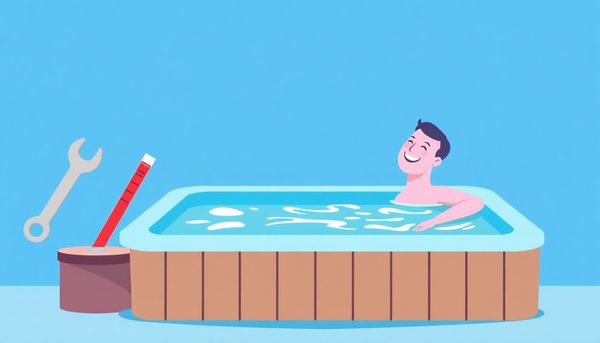
Owning a hot tub is a bit like having a personal oasis—it's where stress floats away. However, that calm can quickly turn chaotic if the water chemistry is off balance. Understanding the delicate balance of chemicals is crucial to keeping your hot tub a haven rather than a hassle.
Water chemistry in a hot tub involves maintaining the right levels of pH, alkalinity, and sanitizer. A friend of mine once shared a story about neglecting these aspects, and the result was water that turned cloudy faster than a Monday morning coffee. To avoid such mishaps, start by investing in a reliable testing kit. These kits are your best friend, helping you monitor the water’s vital stats, ensuring they stay within recommended ranges: a pH between 7.2 and 7.8, and alkalinity levels from 80 to 120 ppm.
After testing, adjust your chemicals as needed. If the pH is off, use a pH increaser or decreaser accordingly. Keep in mind that alkalinity acts as a buffer to pH levels, so balance it first if both are out of whack. And remember, sanitizer—whether bromine or chlorine—keeps the water hygienic. My weekly routine involves checking these levels every few days, especially after heavy use or rainstorms, which can throw off the balance.
Ultimately, by dedicating just a few minutes a week to this task, you’ll ensure that every soak is as blissful as intended. Balancing water chemistry isn’t just maintenance; it’s preserving your piece of paradise.
Water filtration in your hot tub is akin to the lungs in your body—essential for keeping things running smoothly. Ensuring your spa stays free from contaminants isn't just a chore; it's about maximizing the joy of slipping into pristine waters every time you soak.
Start with a basic rule: clean your filters regularly. A simple rinse weekly can go a long way, while a monthly soak in a filter cleaner will rejuvenate those fibers and ensure they trap debris effectively. For those with hard water, a vinegar bath can dissolve calcium build-up, ensuring your filters don’t become clogged over time.
Consider the often-overlooked helper: enzymes. These little biochemical wonders can break down oils and lotions, which means less gunk for your filters to handle. By adding an enzyme treatment to your maintenance routine, you'll lessen the burden on your filtration system and keep your water sparkling.
Remember, prevention is often simpler than remedy. A clever way to catch oils before they reach the filter is by using a few tennis balls. Toss them in, and they'll float around, absorbing the oils and lotions from the water, acting like silent guardians of your filtration system.
Lastly, always keep an eye on your filter's age. Over time, even the best care can't prevent wear and tear. Having a spare filter on hand ensures that relaxation is always just a moment away, without any downtime waiting for a replacement. Embrace these practices, and your hot tub will offer you endless clean and clear escapes.
Owning a hot tub is all about relaxation, but it can quickly turn into a hassle if contamination sneaks in. Fortunately, a few clever strategies can help keep your spa pristine. One of the simplest and most effective tricks is using pantyhose. Cover the lower return inlets with old pantyhose when changing the water. This ingenious method traps dirt and debris, keeping them out of your filter and making water changes less frequent.
Another nifty trick involves tennis balls. Toss a few into your hot tub to absorb oils, lotions, and other residues that might otherwise clog the filters. I've personally seen the difference—a couple of tennis balls bobbing around can make a world of difference in water clarity. Just remember to replace them regularly, especially if your hot tub sees a lot of action.
For those looking to prevent foul smells and mildew, pay attention to your hot tub cover. A basic bleach solution can work wonders here. Mix nine parts water with one part bleach in a spray bottle and give the underside a good clean every three months. This keeps your cover fresh and extends its lifespan.
Finally, consider investing in enzyme products for your spa. These naturally break down organic compounds, preventing that unsightly scum line and supporting your sanitizers in keeping the water clean. Embrace these simple hacks, and you’ll find that maintaining your hot tub can be as soothing as a soak itself.
Enzymes can transform hot tub maintenance from a chore into a breeze. You’ve probably seen them at work in your kitchen, breaking down grease on your dishes, but their magic extends far beyond that. Enzymes in your hot tub operate similarly, targeting and dismantling organic nasties like body oils, cosmetics, and lotions. This powerful breakdown process ensures your water stays crystal clear and your filter system functions optimally.
I once tried using enzymes in my hot tub after a particularly lively barbecue gathering. The next morning, I found the familiar scum line forming around the water’s edge and knew it was time to try something new. I added an enzyme formula specifically designed for hot tubs, and the results were impressive. Within a couple of days, my hot tub was back to its sparkling self, and the water felt noticeably smoother. Not only did it handle the aftermath of that summer party, but it also seemed to reduce the frequency with which I needed to balance the water chemistry.
These tiny proteins work tirelessly, allowing your sanitizer to focus on other tasks and preventing that hard-to-remove ring around the tub. For anyone looking to streamline their hot tub care routine, enzyme products are a worthy addition. They represent an environmentally friendly option that can reduce chemical usage while still keeping your spa in peak condition.

Filters are the unsung heroes of hot tub maintenance, often working tirelessly to keep the water sparkling and inviting. To ensure they perform at their best, a bit of regular attention is a must. Start by giving your filters a quick rinse every week. This simple step helps remove surface debris and prolongs intervals between deeper cleanings.
Every month, treat your filters to a more thorough soak. Use a filter cleaner solution—either commercial or homemade—to dissolve oils and minerals that may have built up over time. To create your own cleaner, mix one part white vinegar with two parts water. Soak the filters for a few hours, then rinse them thoroughly to avoid any leftover residue causing foam in your spa.
Don't forget the power of pressure. A gentle hose spray after each soak can dislodge remaining particles trapped between filter folds. This keeps water flowing smoothly and reduces the workload on your filtration system.
Finally, consider keeping a spare filter on hand. Rotation between two sets allows you to thoroughly clean one while the other is in use, ensuring uninterrupted hot tub enjoyment. Plus, if a filter fails unexpectedly, you've got a backup ready. By optimizing filter efficiency, you save time, reduce wear on your equipment, and enhance your overall hot tub experience.
Ever considered the art of keeping your hot tub water smartly managed? Embracing efficient water management is like finding the missing piece of a puzzle; it completes the experience in ways you wouldn't normally expect. Start by investing in a quality water testing kit. Not only does it help you maintain the perfect balance of chemicals, but it also reduces the need for frequent water changes, saving both water and effort. Think of it as setting the stage for your own mini water quality concert—everything in harmony.
Consider installing a water softener if you live in a hard water area. It’s no secret that calcium build-up can turn your soothing soak into a frustrating cleaning session. With softened water, filters last longer, jets flow more smoothly, and you can avoid the persistent chore of scrubbing away mineral deposits.
Incorporate a cover lifter into your routine. It's not just about making life easier every time you want to take a dip. A cover lifter minimizes heat loss, reduces evaporation, and keeps debris out, significantly improving water retention. Coupled with a floating thermal blanket, it’s like giving your hot tub a cozy quilt during colder months.
Lastly, embrace the digital age by using smart timers and apps to schedule filtration cycles during off-peak energy times. It’s an energy-saving tactic that lowers your bills while ensuring your hot tub stays in pristine condition. Implementing these smart water management tactics transforms maintenance from a chore into a well-tuned strategy that enhances your hot tub experience.
Filters often play the unsung hero in your hot tub's ecosystem, ensuring each dip remains a pristine experience. One Saturday, while soaking in my hot tub, I noticed the jets lacked their usual vigor. Upon inspection, my filter was clogged with debris. This is when I discovered the secret to enhancing filter performance: a diligent routine of cleaning, supported by a few choice tricks.
Begin by rinsing your filters weekly with a garden hose to remove surface dirt. It’s surprising how many folks skip this simple step, thinking a mere soak will suffice. But water pressure aids in dislodging particles caught in the crevices of your filter, which soaking alone might miss.
Once a month, step up your game with a spray cleaner designed specifically for hot tub filters. I learned the hard way that neglecting this could lead to reduced water flow and increased strain on the pump. If a store-bought cleaner isn’t handy, a homemade solution using diluted filter cleaner works wonders. Always rinse thoroughly afterward to prevent residue from causing foam in your tub.
Don't overlook the quarterly filter soak. Simply immerse your filters overnight in a cleaning solution, which will tackle oils and lotions that cling tenaciously to the fibers. Finish with a thorough rinse the next day, and let them dry completely before reinstalling.
Lastly, having an extra filter cartridge on standby is a lifesaver. It allows you to swap out filters, ensuring no downtime while your primary filter undergoes its spa day. With these steps, you’ll extend the life of your filters and keep your hot tub running smoothly.
For those who relish the relaxation of a hot tub but wince at the costs, adopting savvy, budget-friendly techniques can make a world of difference. Start with the basics: off-peak electricity rates. By heating your hot tub during these times, you can significantly cut down on your energy expenses. Many utility companies are more than willing to divulge when these magical hours occur, so don't hesitate to ask.
Next, think insulation. Investing in a high-quality hot tub cover not only preserves heat but also keeps out unwanted debris. A floating thermal blanket can add an extra layer of insulation, maintaining your hot tub's temperature and reducing heating costs. It's a simple addition that pays big dividends over time.
If you’re in a hard water area, white vinegar becomes your best ally. Regular cleaning of jets and valves with this versatile liquid helps prevent calcium build-up, which can lead to costly repairs if left unchecked. Just remember to adjust your water chemistry post-cleaning, as vinegar tends to lower pH levels.
Additionally, consider swapping chemical-heavy cleaning methods for more natural alternatives. Baking soda is a fantastic and affordable option for maintaining pH balance and scrubbing surfaces without harsh abrasives.
Finally, never underestimate the power of regular maintenance. A stitch in time saves nine, and a consistent cleaning schedule can prevent small issues from becoming expensive headaches. By incorporating these cost-saving strategies, you'll enjoy the benefits of your hot tub without draining your wallet.
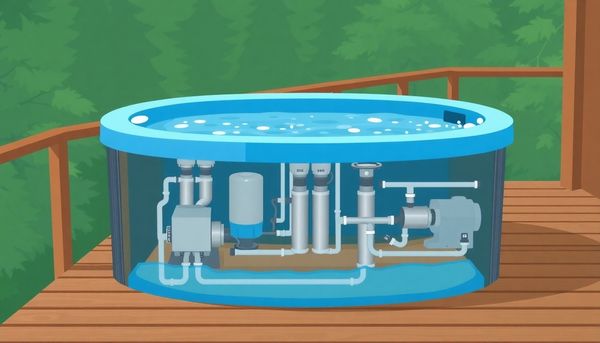
The unsung hero of hot tub maintenance often lies right atop your spa: the cover. More than just a lid, it’s a shield against the gradual wear inflicted by nature. These covers endure constant exposure to heat, moisture, and the elements, making them prone to developing mildew and unwanted odors. I once neglected mine, and the resulting odor was a quick lesson in the importance of proactive care.
Start with a basic cleaning ritual every three months. Mix a solution of nine parts water to one part bleach in a spray bottle. This concoction will keep mildew at bay while refreshing the air around your hot tub. It’s a simple task, but the impact is noticeable. Your cover stays free from the musty smell, and you dodge the inconvenience of replacing it prematurely.
For those living in areas with unpredictable weather, investing in a protective cover cleaner can be a game-changer. These cleaners offer an extra barrier against UV rays, rain, and debris, extending the lifespan of your cover. When storm clouds roll in, you can rest easy knowing your spa is protected from the elements.
Remember, a little maintenance goes a long way. By dedicating just a few minutes to your hot tub cover, you’re not only preserving its condition but also enhancing the overall hot tub experience. Keep that cover clean and robust, and your hot tub will thank you with many more seasons of enjoyment.
Balancing the water in your hot tub is akin to perfecting a recipe—it requires the right mix of elements to achieve a harmonious experience. A well-balanced hot tub ensures not only clarity but also comfort, preventing any irritation to the skin or eyes. Start by understanding the primary components: pH, alkalinity, and sanitizer levels. Each plays a crucial role in maintaining your hot tub's ecosystem. The pH level, ideally between 7.4 and 7.6, is your first check. This range prevents corrosion and scaling, protecting both you and your hot tub.
Next, total alkalinity acts as a buffer, stabilizing the pH and preventing drastic changes. Keep it between 80 and 120 parts per million (ppm) to ensure a steady balance. If you’re new to this, imagine it as the unsung hero keeping pH tantrums at bay. Your sanitizer, whether chlorine or bromine, should be maintained at the manufacturer's recommended levels to ward off harmful bacteria.
To avoid common pitfalls, always test your water using a reliable testing kit. Personally, I’ve found that setting a reminder on my phone ensures I never miss a week without checking. Adjustments should be gradual; too much of a correcting agent can send you into a seesaw of chemical corrections.
Lastly, consider investing in a digital water tester. I got one as a gift and it transformed my routine by adding precision and ease. With these steps, your hot tub becomes not just a place to relax, but a sanctuary of well-maintained comfort.
A hot tub cover does more than just keep the water warm—it acts as the first line of defense against dust, debris, and critters. To extend the life of your cover and ensure it functions effectively, regular cleaning is essential. Think of it as a routine spa day for your hot tub cover, where a little effort goes a long way.
Every few months, use a gentle cleanser to scrub away accumulated dirt and grime. A mild soap mixed with water does the trick without harming the vinyl. Remember to rinse thoroughly, as soap residue can attract more dirt. If your cover resides in a particularly humid area, consider wiping it down with a diluted bleach solution (nine parts water to one part bleach) to fend off mildew. A friend of mine, who lives in a perennially damp region, swears by this method to keep her hot tub cover fresh and odor-free.
Don’t forget the underside! Moisture tends to linger there, making it a prime spot for mold growth. A regular wipe-down keeps the mustiness at bay. And once you’re done with the cleaning, take a moment to apply a UV protectant. This layer of defense helps maintain the cover’s color and prevents cracking from sun exposure. My neighbor learned this the hard way after a season of neglect left his cover looking more like a weathered tarp than a protective shield.
Routine cover cleaning isn’t just about aesthetics—it’s about safeguarding your investment and ensuring your hot tub stays inviting and ready for relaxation at a moment’s notice.
Enzyme treatments might be the unsung heroes of hot tub maintenance, quietly working their magic within your bubbling paradise. These natural powerhouses break down organic contaminants that sneak into your spa from lotions, body oils, and everyday dirt. Using enzymes in your hot tub care routine can significantly ease the burden on your filtration system and enhance the efficiency of your sanitizers.
Think of enzymes as tiny, invisible cleaning agents that tackle unwanted residues to keep your water sparkling. I remember a friend who used to dread the persistent "scum line" around her hot tub. She was skeptical when I suggested enzyme treatments, but within weeks, her tub looked pristine, and she was sold on their effectiveness. By adding an enzyme-based product to your regular maintenance regimen, you can minimize the build-up of pesky residues, ensuring a cleaner spa experience without the heavy lifting.
Besides improving water quality, these treatments can extend the lifespan of your equipment. With fewer contaminants to process, your filter can work less strenuously and maintain optimal performance longer. It's wise to incorporate enzyme products weekly, especially if your hot tub sees frequent use. A small investment in enzymes can lead to less time scrubbing and more time soaking, transforming your hot tub from a chore to a cherished retreat.
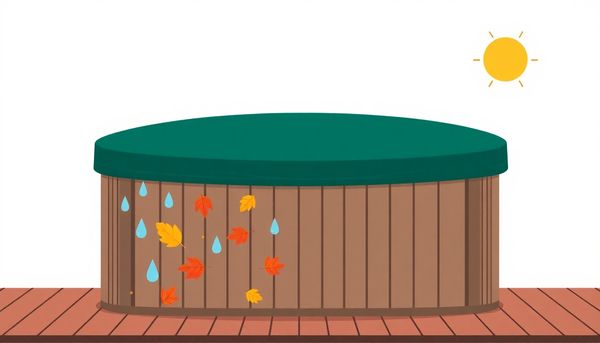
Enzymes, those unsung heroes of biology, can be your secret weapon in maintaining sparkling clean hot tub water. Much like the enzymes in your stomach that break down food, these proteins can digest the unwanted substances lingering in your spa. Body oils, makeup, and even detergent residues are no match for the magic of enzyme products formulated specifically for hot tubs.
Think of the last time you had a group over for a dip. The aftermath usually involves a cocktail of sweat, sunscreen, and who knows what else, swirling around. Instead of relying solely on chemical shock treatments every time, consider enlisting enzymes as part of your routine. By breaking down organic materials, enzymes reduce the workload on your sanitizer, allowing it to focus on killing harmful bacteria rather than getting bogged down with oils and lotions.
Regular use of enzymes leads to less scum build-up around the waterline—those unsightly rings that can mar an otherwise pristine hot tub. Plus, your filter system will thank you, as it remains clear and efficient longer. With enzymes on your side, you might find your hot tub maintenance involves less scrubbing and more soaking.
Give enzymes a try, and you might just appreciate the extra time you gain to enjoy your hot tub rather than fiddle with its chemistry. It’s an easy addition to your care routine that lets you focus more on relaxation and less on cleaning.
A hot tub offers relaxation and enjoyment, but the secret to ensuring it remains a sanctuary is maintaining the water chemistry. A few summers ago, my friend Sarah struggled with murky water in her hot tub, which turned out to be a lesson in the importance of chemical balance. Starting with the right measurements, always use a quality test kit to check the pH, alkalinity, and sanitizer levels at least a couple of times a week. This helps keep your water safe and clean.
Moving on to adjustments, it’s crucial to add chemicals gradually. Sarah learned the hard way when she hastily poured in too much chlorine, turning her hot tub into a bleach bath. The rule of thumb is: less is more. Start with smaller doses, retest, and add as needed. This not only prevents skin irritation but also protects the hot tub's components from corrosion.
To further optimize water chemistry, consider using enzyme products. These naturally break down oils and lotions that accumulate in the water, reducing the workload on your sanitizer. Regularly cleaning your filters with a designated spray cleaner can prevent the buildup of debris, ensuring the water circulates properly and the chemicals do their job effectively.
Incorporating these practices has transformed Sarah’s hot tub maintenance from a chore into a seamless routine, leaving more time to enjoy the bubbles without worries of imbalances.
Enzymes bring a scientific twist to hot tub maintenance, transforming what might seem like tedious chores into a breeze. Imagine these little biological catalysts as your personal team of maintenance ninjas, ready to break down stubborn residues. For example, after a long workday, I found my hot tub water looking a bit murky, likely due to body oils and the various lotions I had applied throughout the week. Instead of reaching for harsh chemicals, I opted for an enzyme-based cleaner. Within days, the water was clearer, and the skin-like film along the edges disappeared entirely.
Enzymes specifically target and decompose organic compounds that infiltrate your spa, such as sunscreen, cosmetics, and natural body oils. By incorporating these products into your maintenance routine, you'll notice that your hot tub stays cleaner for longer periods, and your sanitizer operates more effectively. Moreover, regular enzyme treatments can prevent the unsightly "scum line" from forming around the waterline, saving you from extensive scrubbing sessions.
Consider incorporating enzymes into your cleaning protocol as an investment in time and effort. They are relatively easy to use—usually just a simple addition to your regular regimen—and the payoff is a more efficient filtration system and a tub that is always ready when you are. Embrace enzymes, and your hot tub will thank you with crystal-clear, inviting water, perfect for relaxation or time-travel theories alike.
A sunny afternoon spent soaking in your hot tub can quickly turn into a maintenance headache if contaminants crash the party. These unwanted guests—like dirt, oils, and hair products—affect not just the clarity and quality of your water, but also the longevity of your hot tub’s components. While it might seem like a small concern, preventing these pollutants is crucial for long-term tub enjoyment.
Start by encouraging a pre-soak rinse. A quick shower can work wonders, washing away lotions, perfumes, and any lingering sweat that could otherwise settle into your spa. You might even consider leaving a basket of clean towels and headbands near the tub for guests to use, reminding them to keep oils and hair held back. It’s a simple but effective courtesy that keeps your water fresher for longer.
Another nifty trick involves an unexpected hero: the tennis ball. Toss a few into the water, and watch as their absorbent fibers trap oils and grime, acting like mini scrubbers. This easy step can significantly reduce the workload on your filters and keep your water sparkling.
Lastly, always keep your hot tub covered when it’s not in use. Not only does this maintain heat efficiency, but it also prevents leaves, insects, and other outdoor debris from sneaking into your sanctuary. By taking these simple steps, you ensure each soak is as refreshing and hassle-free as the last.

Navigating the world of hot tub chemicals can feel like walking a tightrope. A slip in this delicate balance might lead to a headache—both figuratively and literally. My cousin once dumped half a container of chlorine into her hot tub, thinking more was better. The result? A tub that could double as a bleach bath and a weekend of nose wrinkles. Her lesson? Measure, don't guess.
Hot tubs, unlike pools, are compact, meaning chemical concentrations can swing from safe to hazardous quickly. Start by familiarizing yourself with the essentials: pH balancers, calcium hardness increasers, and sanitizers specifically formulated for hot tubs. It’s tempting to use pool chemicals due to ease or leftover supply, but resist. The acidity of trichlor tablets and soda ash designed for pools can wreak havoc on your tub’s minuscule volume.
Here's a handy tip: always dissolve chemicals in a bucket of water before adding them to your tub. This ensures even distribution and prevents concentrated patches that could damage the tub’s surface or your skin. And remember, patience is key. After adding any chemical, wait and test before adding more. My friend learned this the hard way when her overzealous adjustments led to a foamy disaster.
By following these measures, you'll enjoy not only crystal-clear water but also peace of mind, keeping your hot tub a haven for relaxation, not a chemistry experiment gone awry.
Balancing water chemistry in your hot tub is like orchestrating a soothing symphony; every element plays a crucial role. Start by thinking of your spa as a tiny ecosystem that requires harmony among its components. A little work upfront ensures each soak is safe and refreshing.
First, familiarize yourself with the core players: pH levels, alkalinity, and sanitizer. Each has its own job, with pH and alkalinity acting as the buffer for your water, while sanitizers, like chlorine or bromine, keep bacteria at bay. Keeping these within their recommended ranges is vital. Too high or too low, and you're looking at a cascade of issues—from skin irritation to costly equipment damage.
Consider investing in a high-quality testing kit. Regular testing, ideally twice a week, can prevent small problems from becoming big headaches. Relying solely on guesswork is a recipe for disaster; precise measurements guide your adjustments. Remember the time your aunt tried to eyeball a cake recipe, and it came out flatter than a pancake? Precision is key here, just as it was in her kitchen.
Finally, don't overlook water source quality. A pre-filter attached to your hose can be a game-changer, ensuring that what you're putting into your tub is as clean as possible. And, if things still seem off, a chat with a local pool and spa expert can provide insights tailored to your region's specific water challenges.
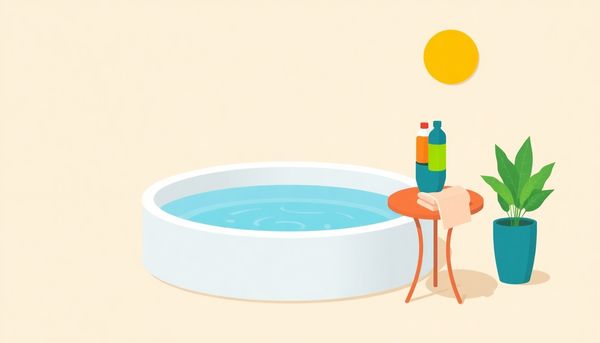
A hot tub isn’t just a bubbling basin of bliss; it’s a small, dynamic aquatic environment that requires regular attention to remain inviting. One cornerstone of effective hot tub care is scheduling regular water tests. Consider your hot tub water testing routine as the periodic check-up it needs to stay in peak condition. Think of it like visiting the doctor: regular appointments help catch issues early.
On a personal note, I remember neglecting this step during my first year of hot tub ownership. The result? Milky, uninviting water and an unexpected chemistry lesson on pH imbalances. Ever since then, I’ve made it a habit to test the water a few times each week, especially after heavy usage or weather changes. This practice ensures that the pH, alkalinity, and sanitizer levels are within the recommended ranges, keeping the water safe and comfortable for everyone.
Doing these tests isn’t as laborious as it sounds. Modern test strips or kits make it fairly straightforward. Just dip, compare the colors, and adjust as needed. If anything is off, you’ll have the chance to correct it before it spirals into a bigger issue, saving time and money on costly repairs or replacements. Moreover, maintaining balanced water chemistry reduces wear and tear on your hot tub’s components, extending its lifespan and ensuring it’s always ready for your next soak.
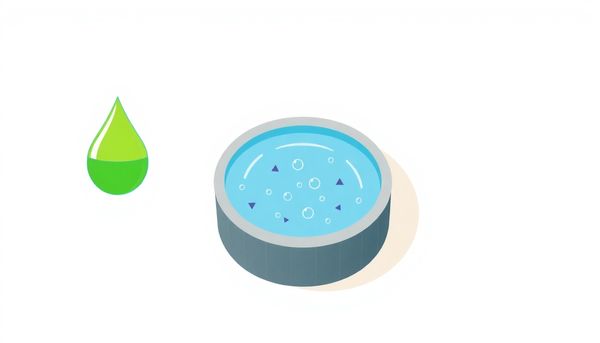
This article provided insights into maintaining your pool. Start your pool care journey today!
Want to become a pool maintenance expert? Our free Pool School course covers everything you need to know about pool care. From basic maintenance to advanced troubleshooting, you'll learn how to:
Join over 10,000 pool owners who have already transformed their pool care routine. Get started with our free Pool School course today!